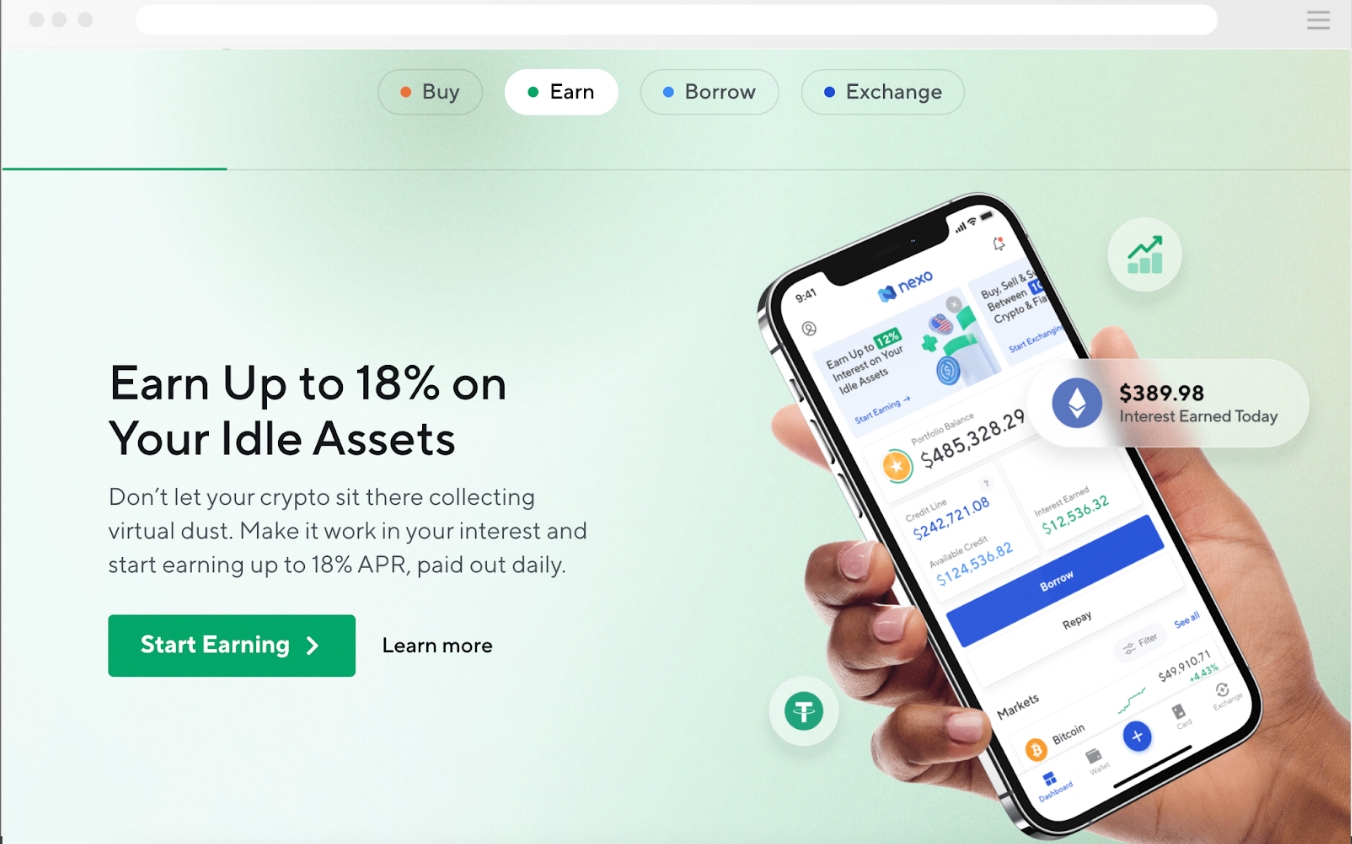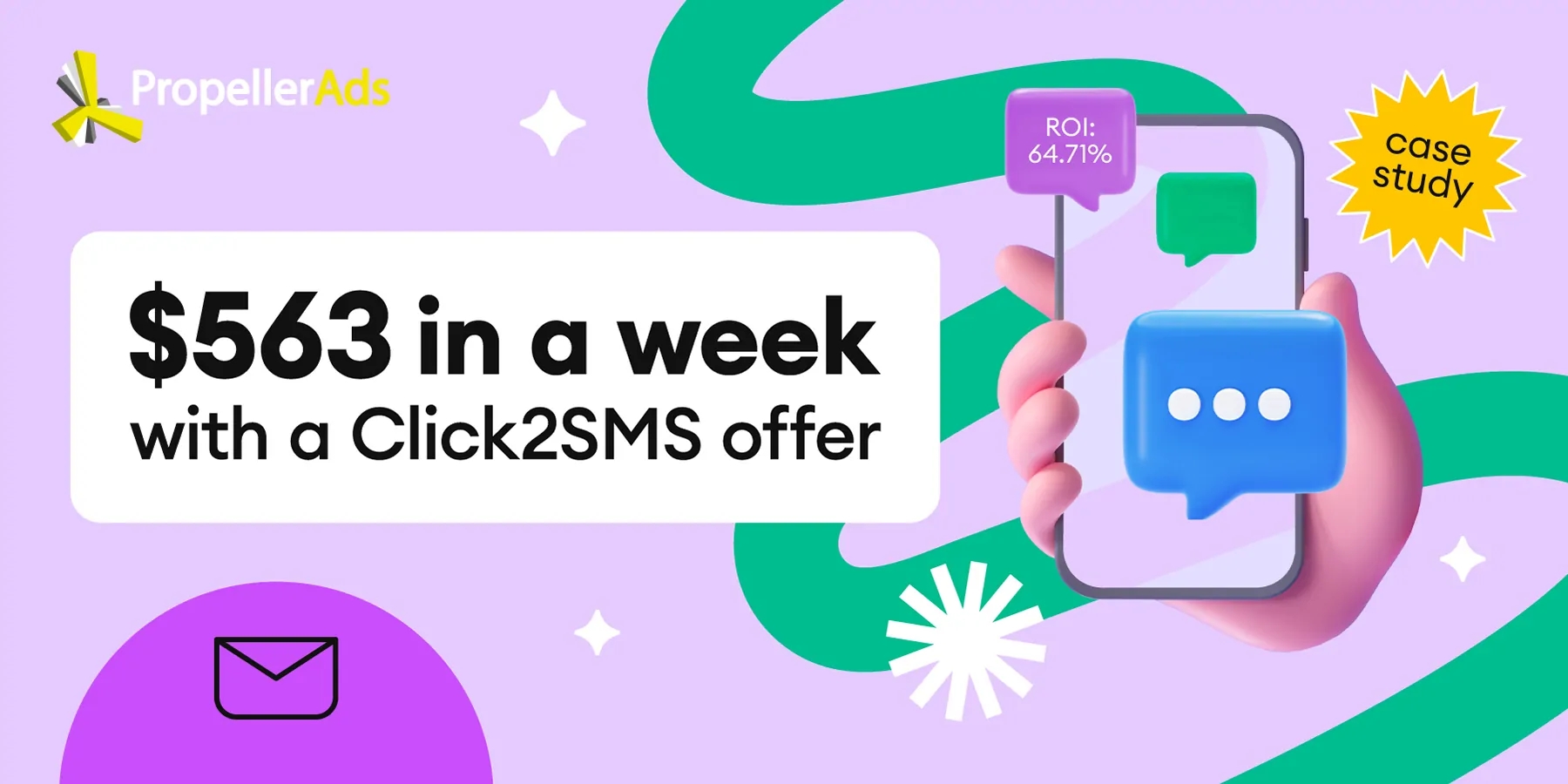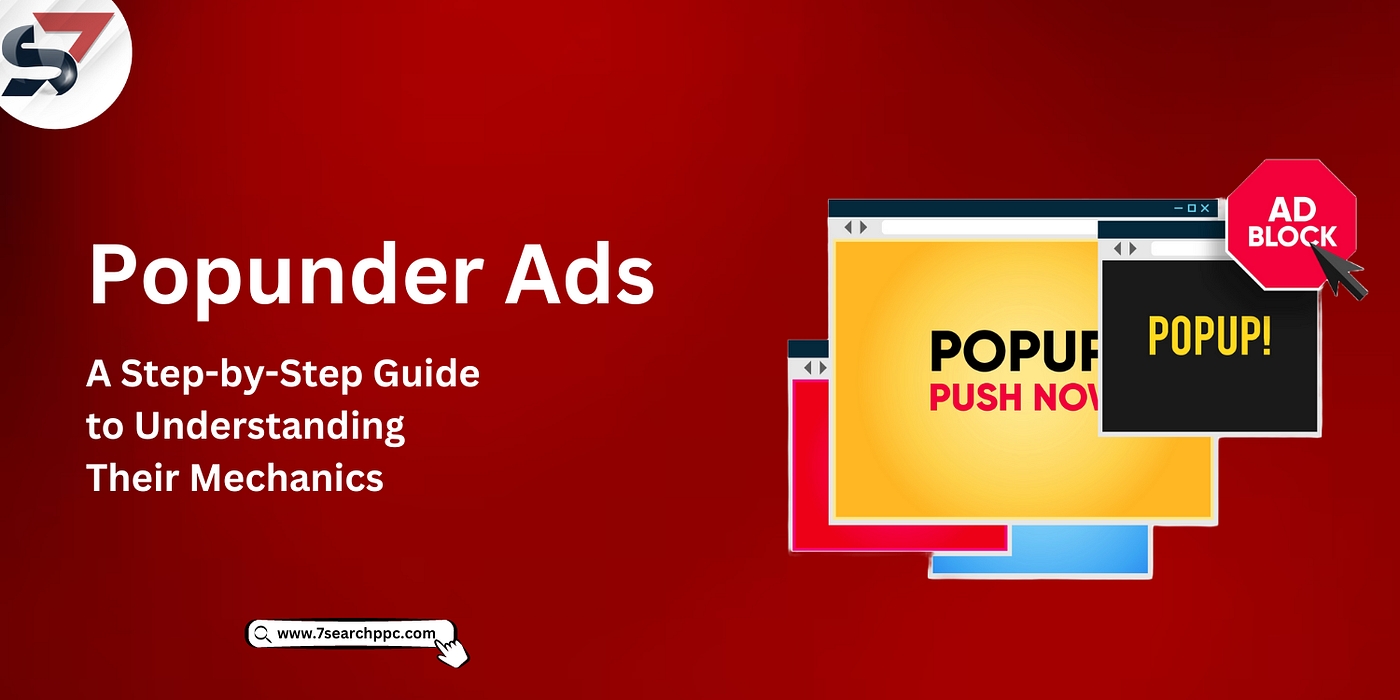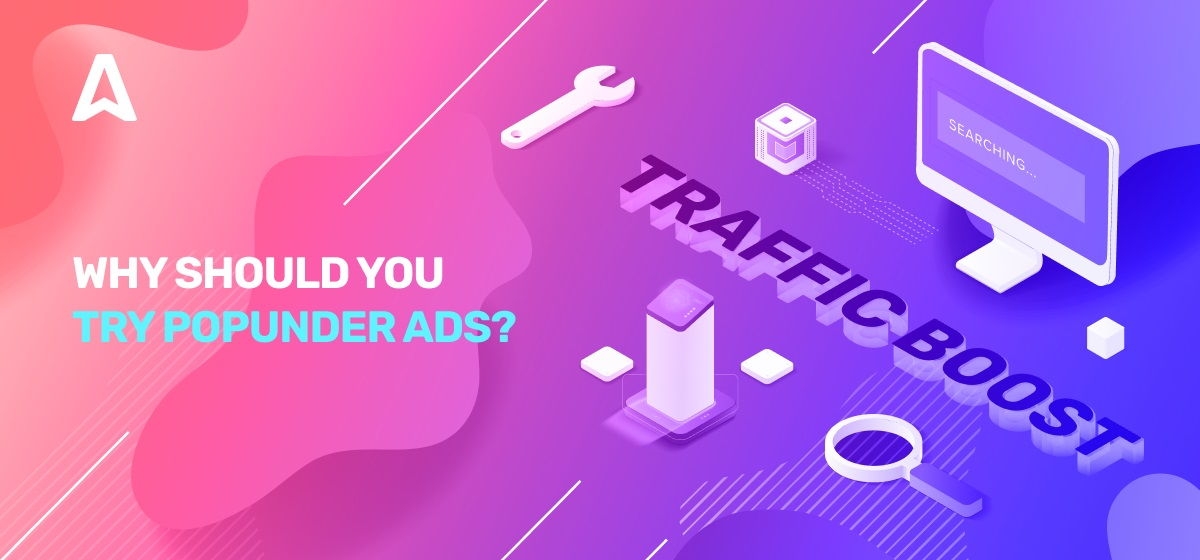Effective Strategies and Successful Examples of Popunder Ad Implementation
Buy CPC Traffic | Buy Display Ads | Exclusive traffic sources | Buy Push Ads | Popunder ADS | Buy Native Ads | Buy Preroll Ads

Buy CPC Traffic | Buy Display Ads | Exclusive traffic sources | Buy Push Ads | Popunder ADS | Buy Native Ads | Buy Preroll Ads
Popunder ads have become a popular advertising strategy for online businesses and marketers. These ads are known for their ability to grab users' attention by appearing in a new browser window that opens behind the current window. When implemented correctly, popunder ads can be an effective way to increase website traffic and generate leads. However, it is important to follow best practices to ensure that these ads do not annoy or frustrate users.
One of the key best practices for implementing popunder ads is to carefully select the timing and frequency of these ads. They should not be displayed immediately after a user visits the website, as this can lead to a negative user experience. Instead, it is recommended to display popunder ads after the user has spent a certain amount of time on the website or performed a specific action, such as scrolling down a certain percentage of the page or clicking on a link.
In addition, it is important to limit the frequency of popunder ads to avoid overwhelming the user. Displaying too many popunder ads can annoy users and lead to a higher bounce rate. It is recommended to limit the number of popunder ads that appear per user session, and to make sure that these ads are spread out evenly throughout the user's visit to the website.
Another best practice to consider when implementing popunder ads is to ensure that they are relevant to the user's interests and needs. Irrelevant or spammy popunder ads can be seen as intrusive and can negatively impact the user experience. It is recommended to use targeting options, such as demographic or interest-based targeting, to display popunder ads that are more likely to be relevant and useful to the user.
Finally, it can be helpful to look at case studies and learn from successful implementations of popunder ads. By studying how other businesses and marketers have effectively implemented popunder ads, it is possible to gain insights and ideas that can be applied to your own advertising strategy. It is important to note that every business is different, so it is crucial to adapt these best practices and case studies to match your specific target audience and goals.
In conclusion, implementing popunder ads can be a powerful tool for driving website traffic and generating leads, but it is important to follow best practices to ensure a positive user experience. By carefully selecting the timing and frequency of these ads, ensuring their relevance, and learning from successful case studies, businesses and marketers can effectively implement popunder ads and maximize their advertising ROI.
What are Popunder Ads?
Popunder ads are a form of online advertising that involve displaying advertisements underneath the current browser window, which only become visible when the user closes or minimizes the current window. These ads are typically triggered when a user clicks on a specific link or performs a specific action on a website.
Popunder ads are considered to be less intrusive than pop-up ads, as they do not interrupt the user's browsing experience. Instead, they are displayed in a subtle way that encourages engagement without being overly obtrusive.
Popunder ads can be an effective marketing strategy for businesses looking to increase brand awareness and generate leads. They can be used to promote products, drive traffic to websites, and increase conversion rates. With the right targeting and optimization, popunder ads can offer a high return on investment.
There are various platforms and networks that offer popunder ads, allowing advertisers to reach their target audience. For example, cheap popunder ads are available on TrafficStars, a leading ad network that specializes in adult traffic and mainstream digital advertising.
In summary, popunder ads are a non-intrusive form of online advertising that can help businesses increase brand visibility and drive conversions. By leveraging the right platforms and optimizing campaigns, businesses can effectively implement popunder ads as part of their marketing strategy.
Definition, Purpose, and Benefits
Popunder ads are a popular form of online advertising where an ad window is displayed behind the current browser window, making it visible once the user closes or minimizes the active window. These ads are often triggered by specific user actions or timers, increasing the chances of user engagement.
The main purpose of popunder ads is to attract the user's attention and promote a product or service. By displaying the ad in a separate window, advertisers can ensure that the user sees the ad even if they navigate away from the website where the ad was initially shown. This can help increase brand awareness, drive traffic to a specific website, and ultimately boost conversions.
There are several benefits to using popunder ads:
High visibility: Popunder ads are not easily ignored because they are displayed in a new window. This increased visibility can lead to higher click-through rates and engagement.
Targeted reach: Popunder ads can be tailored to specific demographics or user behavior, ensuring that the right audience sees the ad. This targeting capability can help improve the effectiveness of the ad campaign.
Cost-effective: Popunder ads tend to have lower costs compared to other forms of online advertising, making them an attractive option for advertisers with limited budgets.
User-friendly: When implemented correctly, popunder ads can provide a non-intrusive user experience. By showing the ad after the user has completed their desired action, such as closing a window, the user is less likely to feel interrupted or annoyed.
Data tracking: Popunder ads can be tracked and analyzed to gain insights into user behavior and ad performance. This data can be used to optimize future campaigns and improve targeting strategies.
Overall, popunder ads can be an effective advertising tool when implemented with careful planning and consideration for the user experience. By understanding the definition, purpose, and benefits of popunder ads, advertisers can make informed decisions and leverage this ad format to achieve their marketing objectives.
Choosing the Right Popunder Ad Network
When it comes to implementing popunder ads, choosing the right ad network is crucial for your success. There are several factors to consider when selecting the right network for your needs.
The first factor to consider is the reach of the ad network. You want to choose a network that has a wide reach and can target your desired audience effectively. Look for networks that have partnerships with a large number of publishers and websites in your target market. This will ensure that your popunder ads will reach a large number of potential customers.
Another important factor to consider is the quality of the network's traffic. You want to make sure that the network has high-quality traffic that is relevant to your target audience. Look for networks that use advanced targeting and filtering techniques to ensure that your ads are shown to the right people at the right time.
It is also important to consider the pricing structure of the network. Look for networks that offer competitive pricing and flexible payment options. Some networks may charge on a per-impression basis, while others may charge based on a cost per acquisition (CPA) model. Consider your budget and goals when choosing the pricing structure that works best for you.
Additionally, you should consider the network's support and reporting capabilities. Look for networks that provide excellent customer support and have a user-friendly interface for managing and monitoring your campaigns. It is important to have access to real-time data and analytics to track the performance of your popunder ads.
Lastly, it is important to research and read reviews about the ad network before making a decision. Look for feedback from other advertisers who have used the network. This will give you insight into the network's reputation and reliability.
1. Reach of the network
2. Quality of the network's traffic
3. Pricing structure
4. Support and reporting capabilities
5. Reputation and reliability of the network
By considering these factors when choosing a popunder ad network, you can ensure that your popunder ads are effectively implemented and reach the right audience to drive conversions and revenue for your business.
Factors to Consider and Best Practices
When implementing popunder ads, there are several factors to consider in order to ensure their effectiveness and minimize any negative impact on user experience. Here are some best practices to follow:
1. Relevance
Ensure that the popunder ads are relevant to the content of your website or the interests of your target audience. Irrelevant ads can frustrate users and decrease their willingness to engage with your site. Consider using native traffic sources that offer highly targeted ad campaigns to enhance relevancy.
2. Frequency
Be mindful of the frequency at which popunder ads are displayed. Bombarding users with too many ads can be intrusive and disrupt their browsing experience. Limit the number of popunder ads per session to maintain a balance between monetization and user satisfaction.
3. Timing
Choose an appropriate timing for displaying popunder ads. Avoid interrupting users while they are in the middle of a task or engaged with important content. Displaying ads during natural pauses, such as when a user navigates to a new page or completes an action, can yield better results.
4. Design

Create visually appealing and non-obtrusive designs for popunder ads. Ads should be eye-catching but not disruptive or distracting. Ensure that the ad placement does not interfere with the functionality of the website and does not obscure important content.
5. Tracking and Optimization
Regularly track and optimize your popunder ad campaigns. Use analytics and data to understand the performance and user response to different ads. Make adjustments to maximize click-through rates and conversions, while also considering user feedback and preferences.
By incorporating these factors and best practices into your popunder ad implementation, you can enhance the effectiveness of your campaigns and improve the overall user experience on your website.
Creating Effective Popunder Ad Campaigns
Popunder ads can be a highly effective way to reach your target audience and drive conversions. However, in order to create a successful popunder ad campaign, it is important to follow best practices and consider various factors. Here are some tips to help you create effective popunder ad campaigns:
1. Define Your Goals
Before starting your popunder ad campaign, it is crucial to clearly define your goals. Are you looking to increase brand awareness, drive sales, generate leads, or promote a specific product or service? Understanding your goals will help you design your popunder ads in a way that aligns with your objectives.
2. Know Your Target Audience
In order to create effective popunder ads, it is important to know your target audience. Conduct thorough research to gather information about your audience's demographics, interests, behaviors, and preferences. This will help you tailor your popunder ads to resonate with your target audience and increase the chances of conversion.
3. Choose the Right Ad Network
Selecting the right ad network is crucial for the success of your popunder ad campaign. Look for reliable and reputable ad networks that have experience in delivering popunder ads to your target audience. Consider factors such as reach, targeting options, ad formats, and pricing when choosing an ad network.
4. Design Attention-Grabbing Ads

Your popunder ads need to grab the attention of your target audience within seconds. Use compelling images, catchy headlines, and concise copy to create ads that stand out. Consider using strong calls to action (CTAs) to entice users to click on your ad and take the desired action.
5. Optimize Landing Pages
When creating popunder ads, it is important to have well-optimized landing pages. Make sure the landing pages are relevant to the ad and deliver on the promise made in the ad. Use clear and concise messaging, include relevant information, and make it easy for users to navigate and take the desired action on the landing page.
6. Monitor and Track Performance
To ensure the effectiveness of your popunder ad campaign, it is essential to monitor and track its performance. Analyze key metrics such as click-through rates (CTR), conversion rates, bounce rates, and return on investment (ROI). Use this data to make informed decisions and optimize your campaign for better results.
By following these best practices and continually optimizing your popunder ad campaigns, you can effectively reach your target audience and drive desired actions. Remember to stay up to date with industry trends and adapt your strategies accordingly to stay ahead of the competition.
Tips and Strategies for Success

Implementing popunder ads effectively requires careful planning and execution. Here are some tips and strategies to help you achieve success:
Targeted Audience: Clearly define your target audience and tailor your popunder ads to appeal to their needs and preferences. Understand their demographics, interests, and online behavior to create highly relevant and engaging ads.
Placement: Choose the right placement for your popunder ads to maximize visibility and impact. Consider strategic positions that capture users' attention without being intrusive or disruptive to their browsing experience.
Frequency Control: Control the frequency of your popunder ads to avoid annoying users. Displaying ads too frequently can lead to negative user experiences and may even result in ad blocking. Find the right balance to maintain engagement without overwhelming your audience.
Optimize Landing Pages: Ensure that your landing pages are optimized for conversions. Make them visually appealing, user-friendly, and easy to navigate. Crafting compelling call-to-actions and providing valuable offers or incentives can also increase the effectiveness of your ads.
A/B Testing: Conduct A/B testing to identify the best-performing popunder ads. Test different variations of your ads, including headlines, images, and offers, to determine which ones generate the highest click-through and conversion rates. Refine your strategy based on the results.
Tracking and Analytics: Implement tracking and analytics tools to measure the performance of your popunder ads. Monitor key metrics such as impressions, click-through rates, conversions, and ROI to understand the effectiveness of your campaigns and make data-driven decisions.
Compliance with Regulations: Follow industry regulations and guidelines when implementing popunder ads. Ensure that your ads are compliant with applicable laws, including privacy and data protection regulations, to protect user rights and maintain trust.
Continuous Optimization: Continuously optimize your popunder ad campaigns based on performance data and user feedback. Use insights gained from analytics to refine your targeting, messaging, and creative elements to improve your conversions and achieve better results over time.
By incorporating these tips and strategies into your popunder ad campaigns, you can enhance their effectiveness and drive better results for your business.
Measuring and Analyzing Popunder Ad Performance

Measuring and analyzing the performance of popunder ads is crucial for advertisers and publishers to optimize their campaigns and ensure maximum ROI. By gathering and analyzing relevant data, they can make informed decisions and fine-tune their strategies.
To effectively measure and analyze the performance of popunder ads, there are several key metrics and tools that can be utilized:
Conversion Rate
The conversion rate is one of the most important metrics to measure the effectiveness of a popunder ad campaign. It measures the percentage of users who take the desired action, such as making a purchase or signing up for a newsletter, after being exposed to the ad. By tracking the conversion rate, advertisers can identify which ads and landing pages are performing well and optimize underperforming ones.
Bounce Rate

The bounce rate measures the percentage of users who leave the landing page without taking any further action. A high bounce rate could indicate that the ad is not relevant or engaging enough, or that the landing page experience needs improvement. Advertisers can use A/B testing to compare different variations of their popunder ads and landing pages to reduce the bounce rate and increase conversion rates.
Click-Through Rate (CTR)
The click-through rate measures the percentage of users who click on the popunder ad after being exposed to it. A high CTR indicates that the ad is compelling and engaging, while a low CTR may suggest that the ad needs improvement or is not targeting the right audience. Advertisers can experiment with different ad designs, headlines, and calls-to-action to increase the CTR.
There are also various analytical tools available to measure and analyze the performance of popunder ads:
Google Analytics: This widely-used web analytics tool provides detailed insights into user behavior, conversion rates, bounce rates, and other key metrics. By integrating Google Analytics with popunder ad campaigns, advertisers can get a comprehensive understanding of ad performance.
Heatmaps: Heatmap tools like Crazy Egg or Hotjar can visualize user behavior on landing pages, showing where users click, scroll, or spend the most time. This data can help identify any usability issues or opportunities for improvement.
Affiliate Tracking Software: For publishers running affiliate programs, affiliate tracking software like HasOffers or Cake can provide detailed information about clicks, conversions, and revenue generated by different popunder ads.
By regularly measuring and analyzing the performance of popunder ads using these metrics and tools, advertisers and publishers can optimize their campaigns, improve user experience, and maximize their return on investment.
Key Metrics and Tools for Tracking

Implementing popunder ads requires careful monitoring and tracking of various metrics to assess the effectiveness of your campaigns. Here are some key metrics and tools that can help you track and optimize your popunder ads:
1. Impressions

Impressions refer to the number of times your popunder ad is displayed to website visitors. Monitoring impressions can give you an idea of the visibility and reach of your ads.
2. Click-through Rate (CTR)
CTR is the percentage of users who click on your popunder ad after seeing it. This metric helps you evaluate the relevance and attractiveness of your ad content.
3. Conversion Rate

Conversion rate measures the percentage of users who perform a desired action, such as making a purchase or submitting a form, after being exposed to your popunder ad. Tracking conversions helps you determine the effectiveness of your ad in driving desired user actions.
4. Bounce Rate
Bounce rate indicates the percentage of users who leave your website immediately after seeing your popunder ad. A high bounce rate may suggest that your ad is not delivering the expected user experience or targeting the right audience.
5. Cost per Acquisition (CPA)

CPA is the amount of money you spend to acquire a new customer or achieve a specific action, such as a sale or a lead. By tracking your CPA, you can assess the cost-effectiveness of your popunder ad campaigns.
Tools for Tracking

There are various tools available to help you track and measure the performance of your popunder ads:
Google Analytics: A powerful web analytics tool that provides comprehensive data on user behavior, conversions, and other key metrics.
Heatmap tools: Tools like Hotjar or Crazy Egg can provide visual representations of user interactions with your popunder ads, helping you identify areas for improvement.
Conversion tracking platforms: Platforms like Voluum, ThriveTracker, or BeMob offer advanced tracking features specifically designed for affiliate marketers and advertisers.
A/B testing tools: Tools like Optimizely or Google Optimize allow you to test different variations of your popunder ads to determine which perform better.
By regularly monitoring these key metrics and utilizing the right tracking tools, you can gain valuable insights and make data-driven decisions to optimize your popunder ad campaigns for better results. Remember to test and experiment with different strategies to continuously improve your advertising efforts.
What are Popunder Ads?
Popunder ads are a type of online advertising that appear behind the main browser window and are only visible to users when they close or minimize their current browser window. They are considered to be less intrusive than pop-up ads and can be an effective way for advertisers to reach their target audience.
How can I effectively implement Popunder Ads?
There are several best practices to effectively implement Popunder Ads. Firstly, it's important to target the right audience and choose websites that align with your target market. Additionally, optimizing the ads for different screen resolutions and devices can improve the user experience. It's also crucial to carefully consider the frequency and timing of the ads to avoid annoying users. Finally, monitoring and analyzing the performance of the ads can provide valuable insights for optimizing future campaigns.
Can you provide any case studies on successful Popunder Ad campaigns?
Yes, there have been several successful Popunder Ad campaigns. One notable example is a travel booking website that saw a significant increase in bookings after implementing Popunder Ads on popular travel-related websites. Another case study involves an e-commerce store that experienced a boost in sales by using targeted Popunder Ads on fashion and lifestyle blogs. These success stories highlight the effectiveness of Popunder Ads when implemented correctly.
Are there any drawbacks or limitations to using Popunder Ads?
While Popunder Ads can be effective, there are also some drawbacks and limitations to consider. One common concern is that they may be perceived as annoying or intrusive by some users. Additionally, some web browsers and ad-blocking software can block or disable Popunder Ads. It's also important to be mindful of the potential impact on website load times and user experience. However, when used responsibly and strategically, Popunder Ads can still be a valuable advertising tool.
How do I measure the success of my Popunder Ad campaigns?
There are several ways to measure the success of Popunder Ad campaigns. One commonly used metric is click-through rate (CTR), which measures the percentage of users who click on the ad. Conversion rate is another important metric, as it indicates the percentage of users who take a desired action, such as making a purchase or signing up for a newsletter. Other metrics to consider include return on investment (ROI), bounce rate, and engagement metrics like time spent on site. By tracking and analyzing these metrics, you can assess the effectiveness of your campaigns and make informed decisions for future optimization.
What are popunder ads and how do they work?
Popunder ads are online advertisements that open in a new browser window underneath the main browser window the user is currently viewing. They are triggered by a user's action, such as clicking on a link or closing a webpage. When the popunder ad opens, it remains hidden behind the main window until the user closes or minimizes the main window. This type of ad is often used to generate additional revenue for websites.
Buy CPC Traffic | Buy Display Ads | Exclusive traffic sources | Buy Push Ads | Popunder ADS | Buy Native Ads | Buy Preroll Ads
2022-2024 @ How to effectively implement Popunder Ads: Best Practices and Case Studies